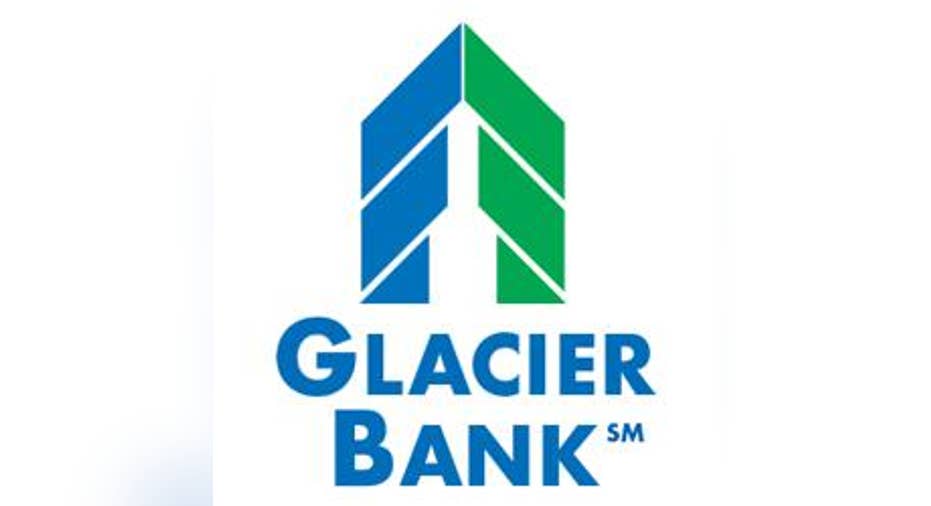The Best Bank Stock You've Never Heard Of

If you asked a group of investors to name the very best bank stock to own for the long term, I bet you'd hear a lot about Wells Fargo , U.S. Bancorp , or maybe a few other large, well-known banks.
I seriously doubt you'd learn about Glacier Bancorp , a $9 billion bank spanning six states in the Rocky Mountain region. That's a shame, because this regional bank stock is about as good as it gets.
Eye-catching performanceOver the past 20-, 15-, and five-year periods, Glacier stock has outperformed Wells Fargo, U.S. Bancorp, and the S&P 500 on a total return price basis. Total return price includes reinvested dividends along with stock price appreciation. The following chart speaks for itself.
GBCI Total Return Price data by YCharts
A stock doesn't have that much long-term success without a strong fundamental business that drives it higher. Glacier is no exception.
Since the bank's current CEO, Michael Blodnick, took the reins in 1998, the bank's total assets have leapt from $790 million to $9.1 billion today. Earnings per share over the same period have risen from $0.39to $1.54, adjusted for stock splits. Comparing Glacier's returns and operating metrics to industry elites such as Wells and U.S. Bancorp again shows exceptional performance.
|
Q1 2016 |
Return on Average Assets |
Return on Average Equity |
Efficiency Ratio |
|---|---|---|---|
|
Glacier |
1.27% |
10.47% |
55.5% |
|
U.S. Bancorp |
1.32% |
13% |
54.6% |
|
Wells Fargo |
1.21% |
11.75% |
58.7% |
According to the most recent quarterly banking profile from the FDIC, the industry average return on assets was 1.03%, return on equity was 9.12%, and the efficiency ratio was 59.9%. These three banks are all well ahead of the rest of the industry, each justified as a top performer.
Glacier's returns on assets and efficiency ratio are in line with U.S. Bancorp's and beat Wells Fargo by both measures. A bank's efficiency ratio represents the expenses required to generate a dollar of its revenue. A lower ratio is considered more efficient.
Source: company website.
Glacier's return on equity is above industry averages, but it does trail both Wells and U.S. Bancorp. One headwind to higher ROE is the bank's decision to hold more capital relative to its assets than either of the other banks here. Glacier's assets-to-equity ratio is 8.3, compared with 9.2 and 9.4 at U.S. Bancorp and Wells Fargo, respectively.
The benefit of the extra capital is twofold. It protects the bank from unforeseen economic problems and losses, and it provides the bank with ammunition to pursue acquisitions and new opportunities as they arise. Long term, the theory goes, these dual benefits will result in higher shareholder value than the small improvement in return on equity with lower capital.
Even better for investors, Glacier's management has a very shareholder friendly style Since 1998, Glacier has completed 17 significant acquisitions, with No. 18 currently in the works. Growth by acquisition can be a powerful driver of shareholder value, as long as each deal is appropriately priced, structured, and strategically justified. Growth for the sake of growth can be a death knell.
However, Glacier's growth strategy is fully aligned with shareholder value. Blodnick explained as much in his 2015 letter to shareholders.
That's music to an investor's ear. It's an acquisition strategy based on building value, with no ego to be found.
The bank's dividend currently yields 3.1%, better than U.S. Bancorp's 2.4% and Wells' 3.04%. Glacier's yield here does not include a special dividend of $0.30 per share paid to shareholders in January. The bank has paid a special dividend each of the past two years.
Glacier's management and board have a stated goal to increase the dividend 10% per year, however, the bank will follow through on that target only if its capital base is sufficiently strong and there isn't a higher value use for that cash, like an acquisition. In other instances, where capital is in excess at a year end, management has issued special dividends.
In each case, the capital allocation decisions are prudent, thoughtful, and always include the shareholder's perspective as a priority.
A premium price for a premium stock The market recognizes Glacier as an elite bank stock, and it prices the bank's shares accordingly.
GBCI Price to Book Value data by YCharts
There are certainly cheaper bank stocks available in the market today. However, few represent the quality of bank that Glacier, U.S. Bancorp, or Wells Fargo offer. And when investing in banks, quality should always come first.
Warren Buffett put it thusly in his 1990 letter to shareholders: "We have no interest in purchasing shares of a poorly managed bank at a 'cheap' price. Instead, our only interest is in buying into well-managed banks at fair prices."
To me, Glacier Bancorp meets the definition of a well-managed bank to a "T." It's operating performance is on par with the best banks in the country, its policies are prudent and shareholder friendly, and its management team has a proven track record of success. For any bank stock investor, this regional stock is a winner worth a closer look.
The article The Best Bank Stock You've Never Heard Of originally appeared on Fool.com.
Jay Jenkins has no position in any stocks mentioned. The Motley Fool owns shares of and recommends Wells Fargo. The Motley Fool has the following options: short May 2016 $52 puts on Wells Fargo. Try any of our Foolish newsletter services free for 30 days. We Fools may not all hold the same opinions, but we all believe that considering a diverse range of insights makes us better investors. The Motley Fool has a disclosure policy.
Copyright 1995 - 2016 The Motley Fool, LLC. All rights reserved. The Motley Fool has a disclosure policy.



















